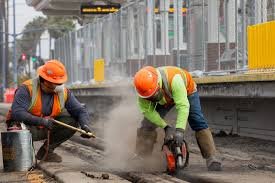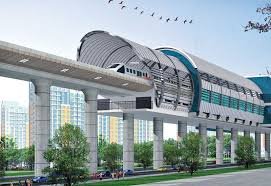Dubai Metro Blue Line Construction: A Milestone in Urban Mobility
Dubai has officially broken ground on the highly anticipated Blue Line of its metro network. His Highness Sheikh Maktoum bin Mohammed bin Rashid Al Maktoum presided over a ceremony at Dubai Creek Harbour on June 9, 2025, setting the project in motion. This ambitious metro extension aligns with Dubai’s bold vision for smart, sustainable urban mobility.
Iconic Architecture Meets Functionality
At the heart of the Blue Line is Dubai Creek Harbour station—a future global icon rising 74 meters above ground, set to become the highest metro station in the world. Conceived by the talented team behind the Burj Khalifa and Skidmore, Owings & Merrill, its seashell-like design echoes natural elements like earth, air, fire, and water .
Seamless Network Integration
Stretching over 30 km, the Blue Line will connect 14 stations, with a balanced split of five underground and nine elevated stops. Key interchanges at Centrepoint (Red Line), Creek (Green Line), and International City (1) promise smooth transfers and reinforce the line’s role as a central spine in Dubai’s transport grid.


Passenger Capacity & Speed
Trains will operate at speeds up to 110 km/h, transporting around 15.5 km underground and 14.5 km above ground, with a peak capacity of 46,000 passengers per hour each way . Daily ridership is projected to hit 200,000 by 2030, climbing to 320,000 by 2040, alleviating traffic and improving urban accessibility.
Strategic Urban and Economic Impact
As a major catalyser of the 20‑Minute City initiative, the Blue Line enhances access to essential services, employment centres, and educational hubs—helping ensure 80% of urban necessities are reachable within 20 minutes . Surrounding real estate values are expected to rise by up to 25%, while the project is forecast to deliver AED 56.5 billion in economic benefits by 2040 .
Sustainability at Its Core
Dubai’s RTA is set to make the Blue Line the region’s first metro system to meet platinum green building standards, reinforcing the city’s commitment to cutting over 240,000 tonnes of CO₂ annually, reducing car usage, and improving last‑mile connectivity through integrated shuttles and e‑mobility options.
Timeline & Construction Details
- Contract value: AED 20.5 billion (~$5.6 billion). Awarded to a Turkish‑Chinese consortium (MAPA, LIMAK, CRRC) via a global tender.
- Construction kick‑off: April 2025 (officially flagged off in June during launch ceremony) .
- Operations scheduled: September 9, 2029—symbolically mirroring the 9‑9‑2009 opening of the original Metro Red Line.
Challenges & Risk Mitigation
Operating in built‑up industrial zones and environmentally sensitive areas presents tunneling and utility challenges—an expected part of delivering a transit project of this scale. However, the RTA has adopted phased implementation, advanced engineering techniques, and inflation‑adjusted budgeting to safeguard delivery timelines .

What Lies Ahead: Social & Commuter Benefits
- Faster, greener options for commuters, particularly students and workers in Dubai Academic City, Dubai Silicon Oasis, and Ras Al Khor.
- Emphasis on autonomous shuttles, pedestrian corridors, and bike‑share systems to enhance last‑mile access.
- Integration with the Dubai Tram and Red/Green metro lines to complete a 131 km driverless rapid‑transit network of 78 stations and 168 trains—ushering in an era of hyper-connected living .
Final Word
The launch of the Dubai Metro Blue Line construction marks a transformative leap for the city’s transport landscape—a defining moment that fuses futuristic design, cutting-edge sustainability, and multi‑modal mobility innovation. Slated to launch on September 9, 2029, this metro extension isn’t just a new rail—it’s the next chapter in Dubai’s journey toward becoming the world’s smartest, most sustainable city.
Do follow UAE Stories on Instagram.
WeRide Robotaxis Ready to Transform Dubai Travel via Uber in 2025













